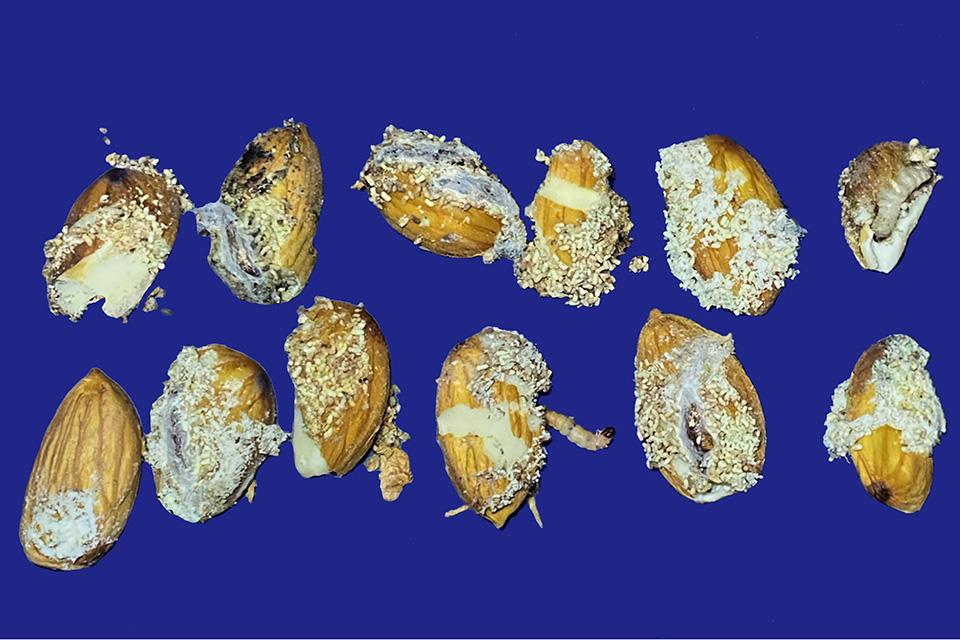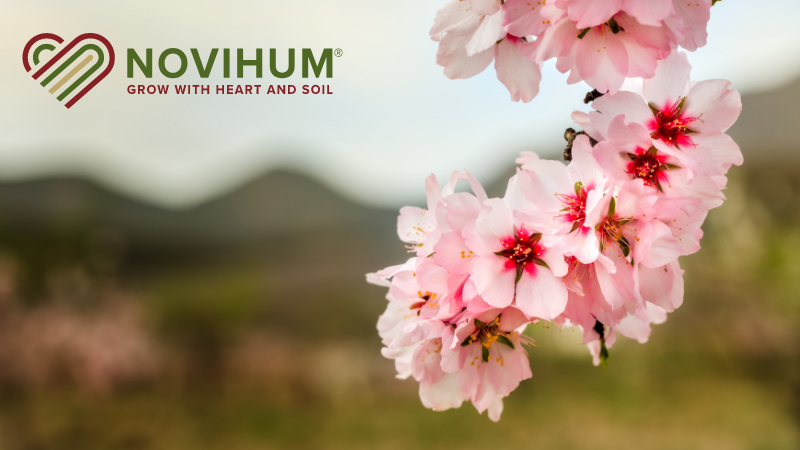Why Almond Growers Should Never Skimp on Pest Control

2023 proved to the worst year for almond navel orangeworm damage in half-a dozen years, unfortunate timing for growers strapped for cash due to low prices.
Photo by Issa Qandah
2023 was a tough year in the almond business, no doubt about it, the worst since the memorable 2017 season. But Issa Qandah, a Pest Control Adviser based in the heart of the San Joaquin Valley, says it doesn’t have to be that way this year. Qandah, a technical service manager for FMC who covers a good chunk of Northern California, urges almond growers — actually, all nut growers — to resist the temptation to try and save money on managing the devastating navel orangeworm (NOW). Many growers who did just that last year were essentially cutting off their nose to spite their face, he says.
“It was not just the high [NOW] populations, we did, but that by itself was not the main cause for the high damage in tree nuts,” he says. “In 2023, many growers didn’t do mummy sanitation nor mummy spray, cut back to one hull split application, and significant acres got abandoned.”
Qandah says that across the valley, NOW damaged an average of 6 to 8%, more than double that seen in an average year.
“I have growers in Arbuckle — really good growers — who still got 5 to 6%,” he says. “There was damage of 40% to 60% in almonds from Bakersfield to Willows.”
There are several culprits, but almost all are due to the fact growers have absorbed lower prices for their nuts the past few years.
“I don’t want to blame growers; prices were not as high as they used to be,” he says. “But when you are up against a pest that has made California its home, you can’t cut back on any of the tools available to you.”
DESTROY THOSE MUMMIES
The most important tool is also the most basic: sanitation. Starting the season with as few pests in your orchards as possible seems obvious, but due to the lower prices, even some large growers in the valley didn’t do much sanitation last winter. It’s not just a matter of shaking the trees to get rid of leftover mummy nuts. Those nuts may well house NOW — a lot more in 2023 — and the pests need to be exterminated.
“For me, knocking down those mummies and grinding them is the main block to a successful year,” Qandah says. “Every grower must do sanitation. It’s the key first step.”
Qandah estimates a good sanitation program costs about $300 to $350 per acre, which isn’t cheap, but it’s necessary. Also, it’s about $100 less per acre than a solid chemical problem, which is the next step.
He recommends good sanitation, but if you still have a few mummies on the trees, a mummy spray in late April to mid-May using 6.0 ounces/a Avaunt eVo (FMC) is needed; starting at 1% hull split, apply 2.2 ounces/acre Altacor eVo (FMC) then follow up with a second application of Altacor eVo at 2.2 ounces/acre within 10 to 14 days. Make sure to use 100 to 150 gallon/acre water volume and keep the speed to 2 to 2.2 mph to get good coverage, which is essential to maximize performance.









